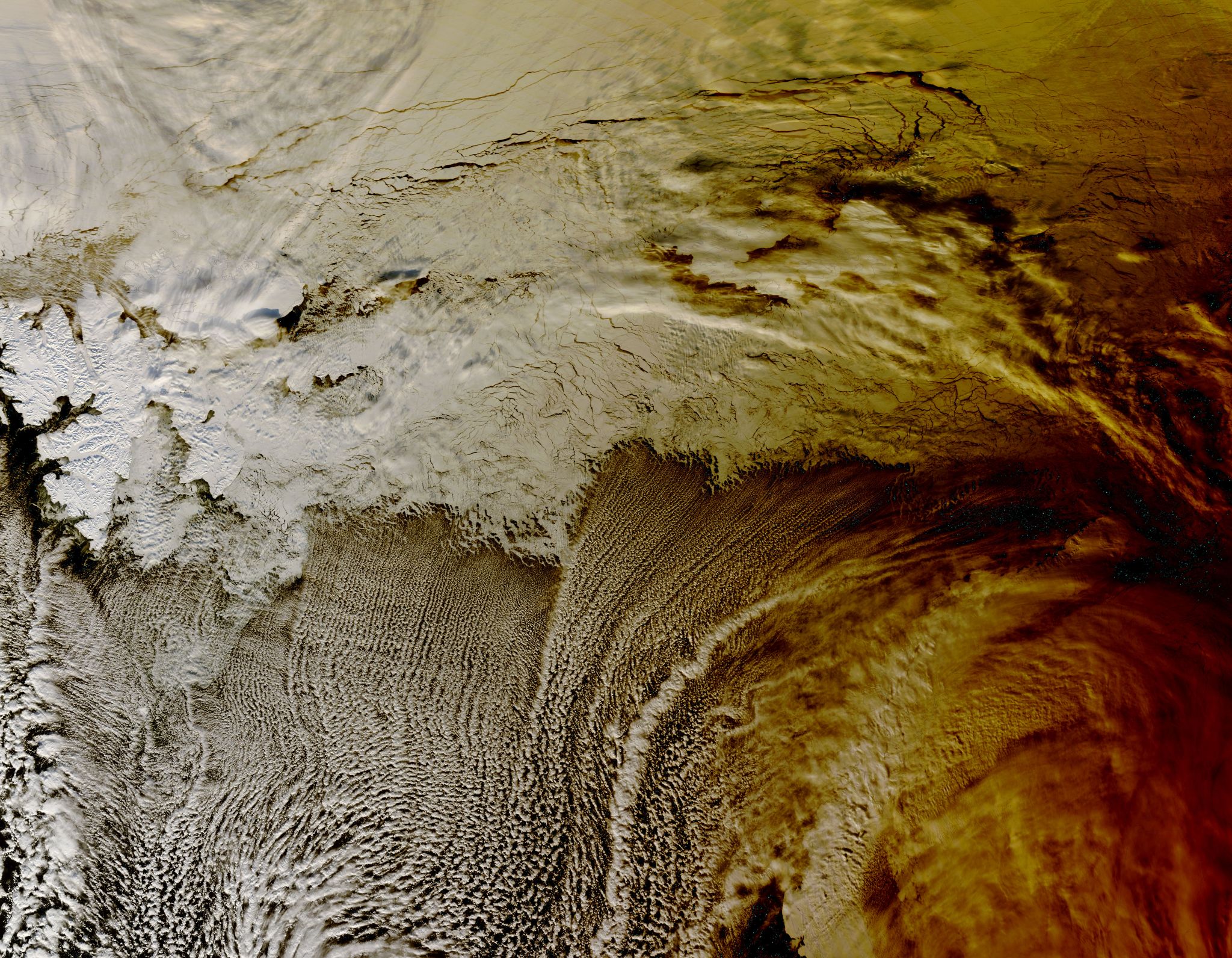
During the morning of March 20, 2015, a total solar eclipse was visible from parts of Europe, and a partial solar eclipse from northern Africa and northern Asia. NASA's Terra satellite passed over the Arctic Ocean on March 20 at 10:45 UTC (6:45 a.m. EDT) and captured the eclipse's shadow over the clouds in the Arctic Ocean.
Terra launched 25 years ago on Dec. 18, 1999. Approximately the size of a small school bus, the Terra satellite carries five instruments that take coincident measurements of the Earth system: Advanced Spaceborne Thermal Emission and Reflection Radiometer (ASTER), Clouds and Earth's Radiant Energy System (CERES), Multi-angle Imaging Spectroradiometer (MISR), Measurements of Pollution in the Troposphere (MOPITT), and Moderate Resolution Imaging Spectroradiometer (MODIS).
On Nov. 28, 2024, one of Terra's power-transmitting shunt units failed. A response team reviewed Terra's status and discussed potential impacts and options. Consequently, the team placed ASTER into Safe Mode. As a result, ASTER data are not currently being collected. All other instruments continue uninterrupted.
Image Credit: NASA Goddard MODIS Rapid Response Team






